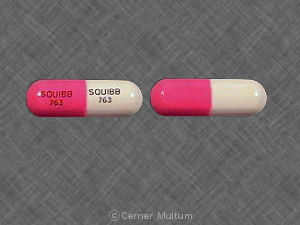Sumycin and Alcohol/Food Interactions
There are 2 alcohol/food/lifestyle interactions with Sumycin (tetracycline).
Tetracycline Multivitamins With Minerals
Moderate Drug Interaction
Consumer information for this interaction is not currently available.
GENERALLY AVOID: The oral bioavailability of quinolone and tetracycline antibiotics may be reduced by concurrent administration of preparations containing polyvalent cations such as aluminum, calcium, iron, magnesium, and zinc. Therapeutic failure may result. The proposed mechanism is chelation of quinolone and tetracycline antibiotics by di- and trivalent cations, forming an insoluble complex that is poorly absorbed from the gastrointestinal tract. Reduced gastrointestinal absorption of the cations should also be considered.
MANAGEMENT: Concomitant administration of oral quinolone and tetracycline antibiotics with preparations containing aluminum, calcium, iron, magnesium, and/or zinc salts should generally be avoided. Otherwise, the times of administration should be staggered by as much as possible to minimize the potential for interaction. Quinolones should typically be dosed either 2 to 4 hours before or 4 to 6 hours after polyvalent cation preparations, depending on the quinolone and formulation. Likewise, tetracyclines and polyvalent cation preparations should typically be administered 2 to 4 hours apart. The prescribing information for the antibiotic should be consulted for more specific dosing recommendations.
Tetracycline Food/Lifestyle
Moderate Food Interaction
Do not take iron supplements, multivitamins, calcium supplements, antacids, or laxatives within 2 hours before or after taking tetracycline. These products can make tetracycline less effective in treating your infection. Do not take tetracycline with milk or other dairy products, unless your doctor has told you to. Dairy products can make it harder for your body to absorb the medication.
Switch to professional interaction data
Sumycin drug interactions
There are 225 drug interactions with Sumycin (tetracycline).
Sumycin disease interactions
There are 4 disease interactions with Sumycin (tetracycline) which include:
More about Sumycin (tetracycline)
- Sumycin consumer information
- Check interactions
- Compare alternatives
- Drug images
- Side effects
- Dosage information
- During pregnancy
- Drug class: tetracyclines
- Breastfeeding
Related treatment guides
Drug Interaction Classification
| Highly clinically significant. Avoid combinations; the risk of the interaction outweighs the benefit. | |
| Moderately clinically significant. Usually avoid combinations; use it only under special circumstances. | |
| Minimally clinically significant. Minimize risk; assess risk and consider an alternative drug, take steps to circumvent the interaction risk and/or institute a monitoring plan. | |
| No interaction information available. |
See also:
Further information
Always consult your healthcare provider to ensure the information displayed on this page applies to your personal circumstances.


